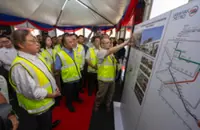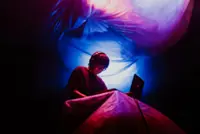A close-up detail of Tan’s 'The Last Gathering' collage work, which uses material such as old photographs and books. Photo: Howard Tan
With the recent lifting of pandemic restrictions, it sounds like Penang-based artist Howard Tan will be back to wandering sleepy small towns and flea markets, with his camera in hand.
This IT professional-turned-photographer is an old soul who enjoys reminders of life in the 1980s, the days of his childhood. Tan likes looking at old architecture and dilapidated townhouses, sampling traditional dishes and snacks – and of course, stopping at a flea market or two, where he scours for curious bits and bobs to add to his growing collection.





